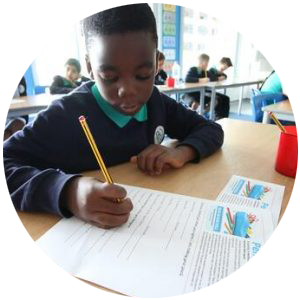What is happening in Ukraine and why?
Russia invaded Ukraine on 24 February 2022. But the lead-up to war began in 2021 when Russia began positioning tens of thousands of soldiers along its border with Ukraine, and more inside the country of Belarus, a country that is friendly towards Russia. Leaders in other countries began to worry the Russians were preparing to invade Ukraine – which they did. Since then, more than 14 million people fled their homes, and many children left for neighbouring countries leaving their schools and friends behind.
First News has been helping teachers and parents explain the news to their children for 16 years. Our award-winning journalists are impartial and unbiased and will help you explain what is happening in Ukraine in an age-appropriate way.
Here’s some important context to the war, that will help to answer questions your class, or children, might have.
Why did Russia invade?
Russia said it wanted Ukraine to “demilitarise” (remove the armed forces). But western leaders say the real reason is that Russia didn’t want Ukraine to join NATO (the North Atlantic Treaty Organisation). NATO is a group of countries that have agreed to protect each other. Russian president Vladimir Putin thinks that, if Ukraine joins, it will give the USA and its allies too much power right next to the Russian border. Russia also demanded NATO removes all troops from Bulgaria and Romania.
NATO members and other countries are against the invasion of Ukraine. They argue that Ukraine should be free to do what it wants and that Russia shouldn’t interfere. Western leaders say if Ukraine wants to join NATO, it should be free to do so.
Are other world leaders trying to end the war?
Yes, but they haven’t got involved directly in fighting. They are worried about the war getting bigger if other countries get drawn into the fighting. But they have been supporting Ukraine by supplying weapons and tanks. Ukraine’s leader Volodymyr Zelensky has also asked NATO countries to supply fighter aircraft to help him win the war against Russia.
Where is Ukraine?
Ukraine sits between Russia and the central European countries of Romania, Slovakia and Poland. To the north is Belarus. From 1919 until 1991, Ukraine was part of the Soviet Union (also known as the Union of Soviet Socialist Republics – USSR). This was a giant country formed after the Russian Revolution in 1917. In total, it was made up of 15 states. All of them became separate countries when the Soviet Union collapsed in 1991. These former Soviet states include Lithuania, Latvia, Estonia and Kazakhstan.
Russia was the biggest power inside the Soviet Union. Many Russians lived and worked in other Soviet countries. There are still large Russian communities in many of these countries, including Ukraine.
What was the Cold War?
The Soviet Union was very powerful. After the Second World War, another global conflict began, known as the Cold War. But this wasn’t a normal war. The main countries involved didn’t fight each other, but there was always tension because both sides feared the other would try to invade them or, worse, launch a nuclear war and wipe them out.
The Cold War saw the Soviet Union and many eastern European countries, like Poland and Hungary, pitted against NATO which included the USA, Canada, UK, and other western European countries, like France and West Germany. The Cold War ended in 1991, when the Soviet Union collapsed.
But isn’t NATO still in existence?
Yes, very much so. Although it was set up at the start of the Cold War, NATO didn’t break up when the conflict ended. In fact, it has expanded.
In 2004, former Soviet states Estonia, Latvia and Lithuania joined NATO. Russia was not happy about this. It meant that an organisation that it considered an enemy now had troops on its eastern border. The decision to allow former Soviet states to join NATO also upset Russia because, back in 1990 and 1991, many western leaders assured the Russians they would not look to expand NATO eastward.
What happened to Ukraine after the Cold War?
Since independence after the collapse of the Soviet Union, Ukraine has mostly been quite friendly towards Russia. But some Ukrainians want to be closer to the European Union and to join NATO. When an uprising in early 2014 forced the pro- Russian president of Ukraine to quit, it seemed the country might change direction and become very pro-Western. Putin acted fast, and sent in Russian soldiers to take control of Crimea. This region of southern Ukraine used to be part of Russia. It remains under Russian control today.
Russia also sent its troops to support pro-Russian rebel fighters in their war against Ukrainian government forces in the eastern part of Ukraine. This conflict, which began in 2014, is ongoing. There are many Russian speakers in eastern Ukraine who prefer to be close to Russia, not the West. But western leaders say that is no excuse for Russia to wade in and support a war.
“I would recommend First News Education to any school who is working to promote an enquiring mind, getting children to ask ‘big’ questions and be curious about the world around them.”
“The variety of topics covered means that you can safely discuss issues that you might feel sometimes unsure about tackling. Children can be nervous and scared by the news, but First News writes about events in such a way that they can get the information they need without feeling overwhelmed.“
Tara Harmer, Deputy Headteacher, Heron Way Primary School

